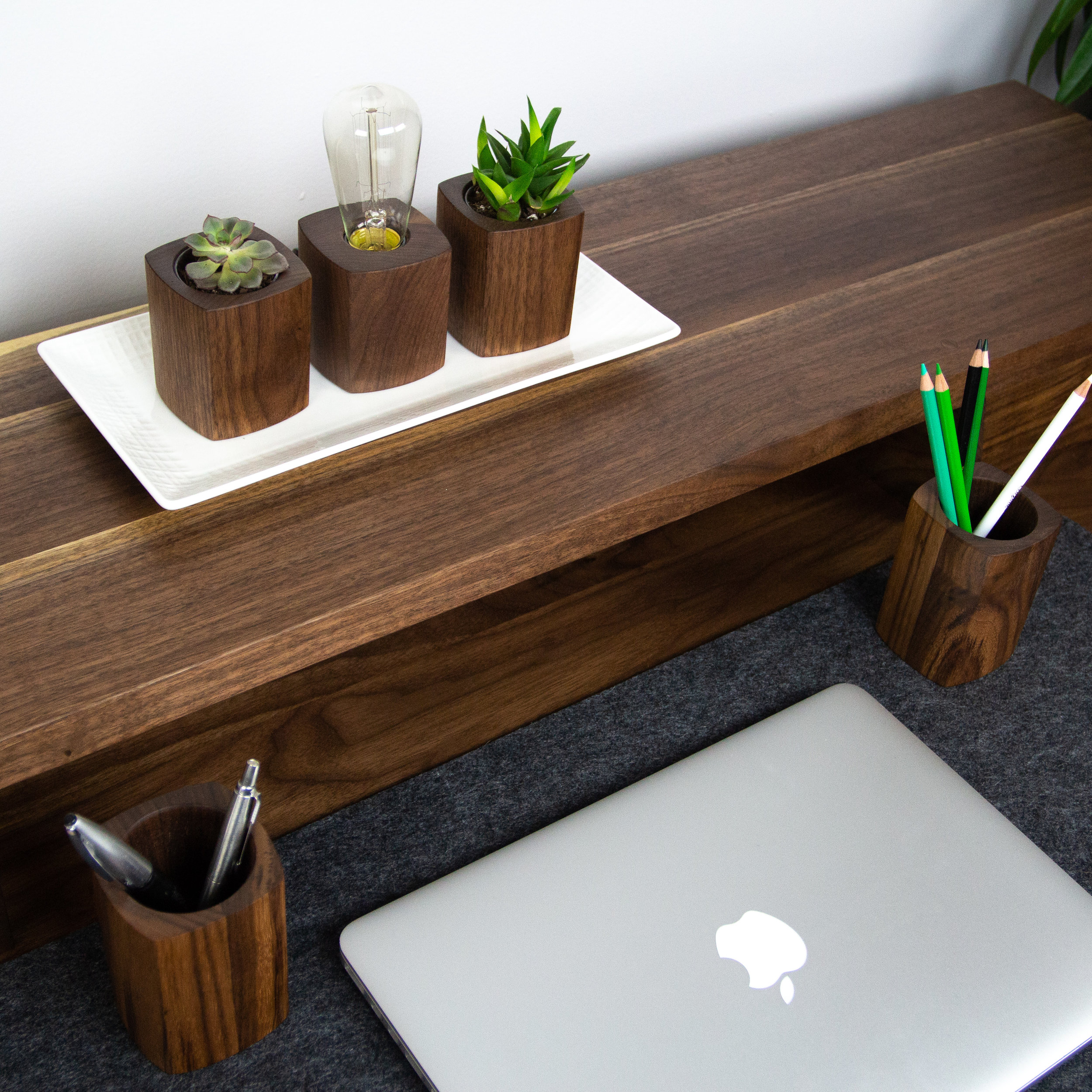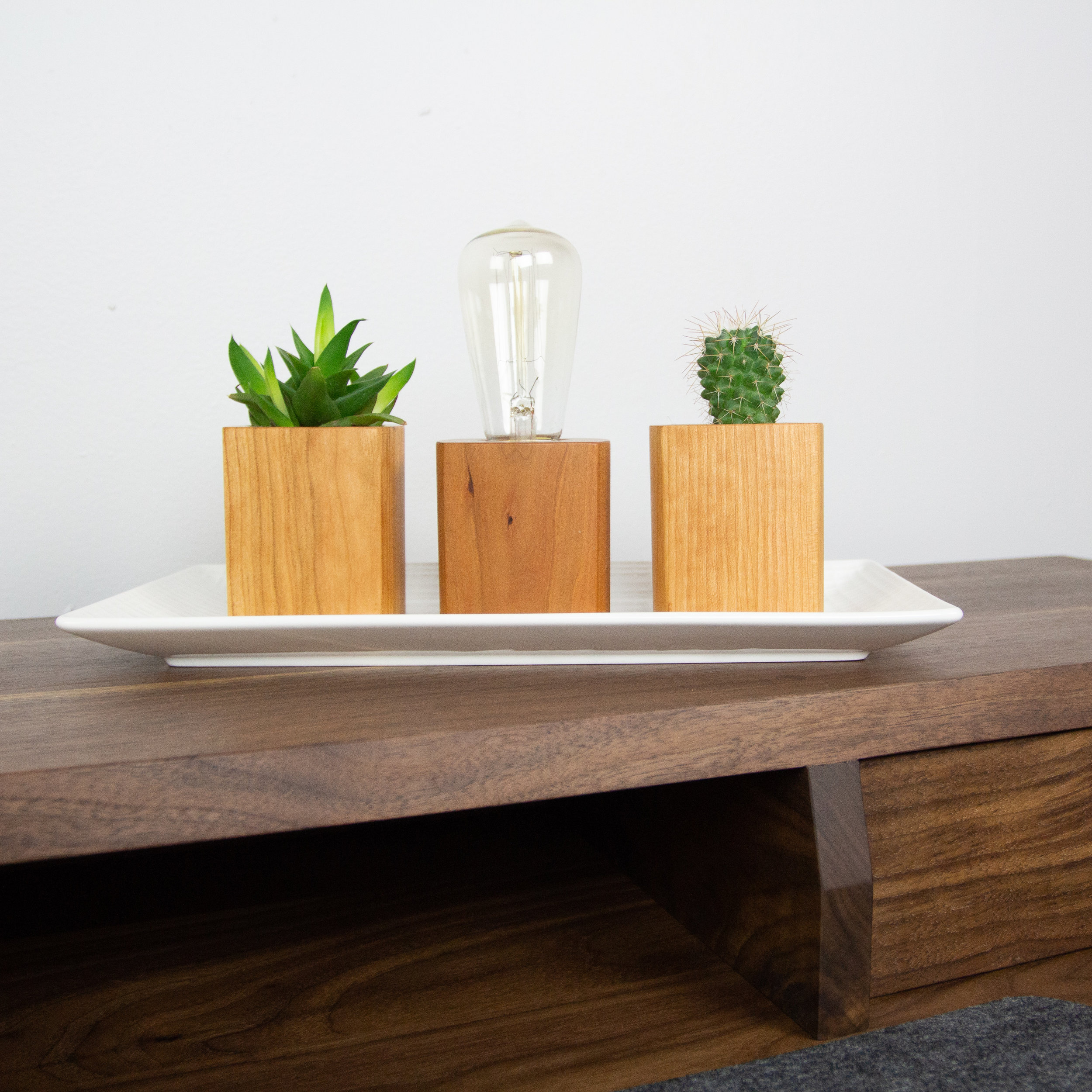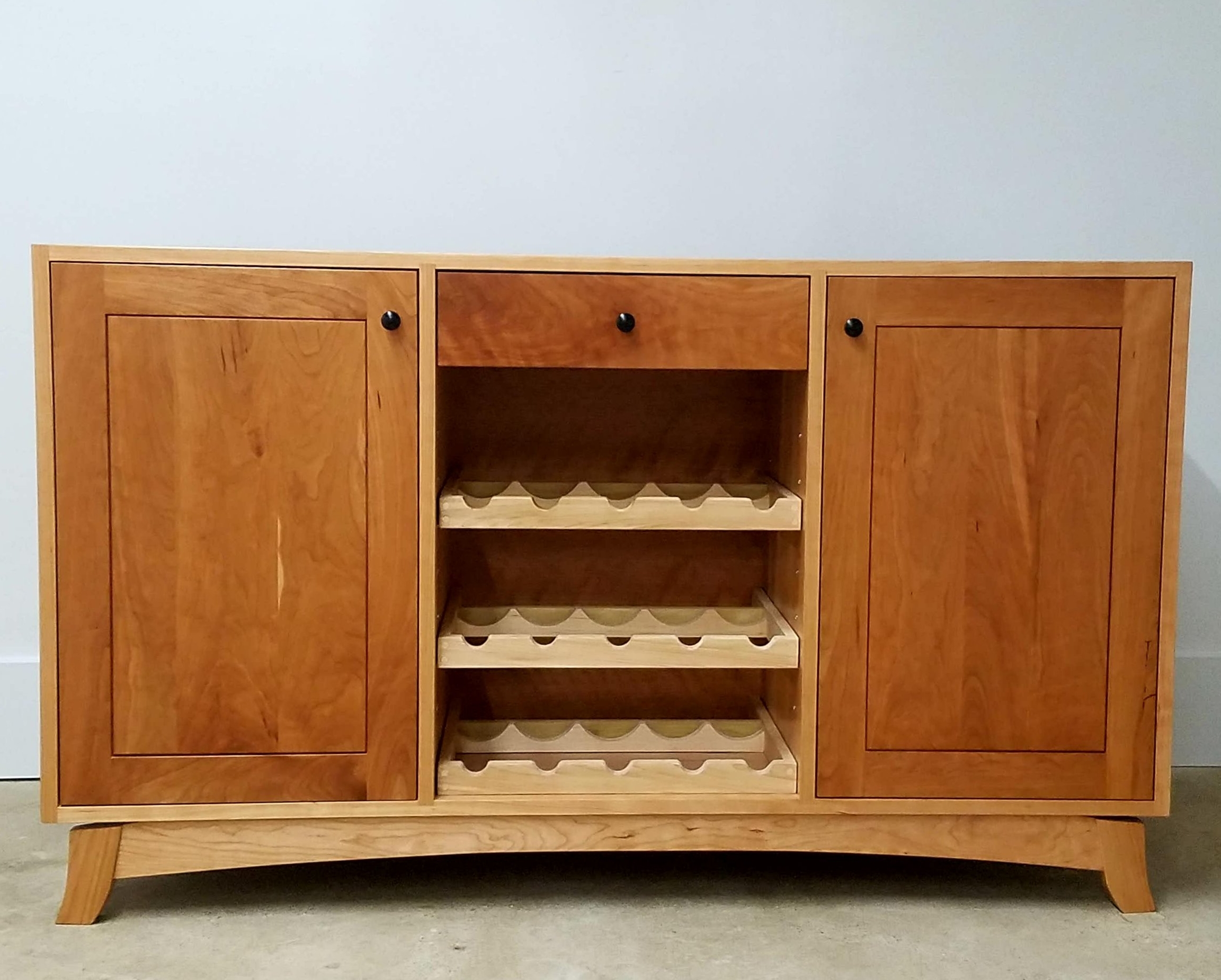Thos. Moser (1935–2025) was more than a master furniture maker—he was a teacher, an artist, and a visionary whose influence reached far beyond the workshop. His passing is a profound loss, but his impact remains in the furniture he created and in those he inspired, myself included. Without his guidance, I may never have had the confidence to start my own furniture business.
Read MoreRooted in Community and Craftsmanship: Tree Planting in Milwaukee
"See how a community tree-planting event with my kids brought fresh meaning to my work as a furniture maker, highlighting the lasting value of trees for both my craft and our environment. Join me in exploring how each tree planted nurtures our future, from the roots up!"
Read MoreMadison Library Tables
In January I had the privilege of building tables for Madison’s new public library. This was an exciting project that featured 100% repurposed lumber from Wisconsin Urban Wood. Wisconsin Urban Wood is a nonprofit network of independent businesses, that partner across Wisconsin to process trees that normally would end up in a landfill. These local trees are removed because of insects, disease, or circumstances that could lead them to waste. WUW’s mission is networking the best use of fallen trees across Wisconsin communities. WUW arborists find suitable logs amongst those destined for removal, then transfer them to be milled into usable lumber. From there they are dried and sold to retail shops or directly to small businesses, like us. They are then developed into long-lived products like furniture, flooring, art, and architecture.
The Madison library project was unique for me as I usually create pieces for individual home use. Building the tables from urban lumber that come right from our neighborhoods and putting in right back into the community made it even more special. The library is a perfect home for the tables for everyone to enjoy for years. As a small local business that believes in sustainability our philosophy aligns closely with WUW. I’m happy to partner with WUW to help their effort of creating a market for urban wood. To learn more about WUW and their work, visit
Sit-Stand desks with urban ash wood tops.
Portable work stations with urban ash wood tops.
Building The Pencil Post Bed
Joe’s only request was that the bed be distinctly my design and complement the existing furniture.
Read MoreReflecting on 2018
From the beginning my goal has always been to build furniture that serves a purpose and provides value to my clients. And so, after 4 years of college and 7 years of civil engineering I moved to serve my clients full time.
Read MoreA Lesson Learned
I made a mistake. Different timbers from the same species of tree can yield different grain patterns and colors. The walnut floor model that Jane and Paul saw in my showroom used lumber from Cedarburg, WI and had a natural reddish tint. However, the timber I used for their table came La Crosses, WI and had a brown chocolate tone.
Read MoreAutumn Give away
Autumn give away entry form.
Read MoreDesign a Bedroom Set
I wanted the design to look heavy yet well-proportioned. Drawing upon the creed of the arts and craft movement I incorporated reverse-tapered legs into the design. The reverse-taper delivers a wide stance that provides strength and stability while the thinned taper adds an element of grace.
Read MoreDesigning the desk Top collection
The inspiration came in 2015 while I was still working as an engineer. I had just started at the company and was touring the facility. As my boss, Paul, walked me through the building I notice all gray walls and plastic gray furniture. When we finally made it to Paul’s office I noticed he had removed his plastic monitor stand and replaced it with a round cutoff of a log. This splash of color stuck in my mind.
Once I had settled into the Job I asked Paul about the log. He said it was a piece of firewood that he had sanded and varnished because he wanted some natural wood in his office. This was the spark that inspired the desk collection.
When I started brain storming for the desk collection I focused on items that would add a splash of color to a desk, but still be practical and function.
I wanted to make a set that would serve a purpose in every office in America. I settled on three items, a Pen Cup, a Succulent Planter and a lamp. The final design took many iterations. The first attempt was a simple square. The square design looked heavy and lacked refinement. The second attempt was a true cylinder. The cylinder design was lighter, but looked utilitarian without refinement. The final design was a combination of the two; A rounded polygon. The perfect combination of clean lines and natural curves.
Although the shape seamed simple it presented a challenge when it came time for fabrication. I used the lathe to bore the cup, however the rounded sides could not be turned on the lathe. To create the curved sides, I first used the band saw to rough out the shape, but the final sculpting had to be done by hand. Sculpting the sides was tedious but the results were worth it. The result was a simple design with tremendous aesthetic appeal.
I have always believed that the tools we use reflect the quality of the work we do. My original goal for the desk collection was to bring a splash of color and life into the workplace but I also hope it inspires you and adds meaning to the work you do.
Designing the Spindle Back Chair
Last October I promised my faience, now wife, a set of dining chairs for Christmas. It’s now July and Amber has just received her chairs. I guess the old adage holds true; “The carpenter's house always needs work.”
Many woodworkers consider a chair to be the hardest piece of furniture to design. It must be strong to endure constant use, easy to move and most importantly it must be conformable. When I started the design process I knew I wanted a chair that was practical and elegant.
Wooden pegs secure the back spindles and prevent the spindles from coming loose.
The chairs are comprised of three main components, the legs, the seat and the back. I used turned legs to reduce weight while maintaining structural integrity. I chose Ash for the legs because its long straight grain is strong, predictable and resistant to cracking. The legs extend through the seat and are secured with wooden wedges that add durability while accenting the joinery. The legs are splayed outwards which provides stability while visually balancing the chair with the sloping back. To add a delicate look, I used custom fabricated brackets embedded in the legs to eliminate the need for stretchers.
The seats are carved by hand. I start with an angle angle grinder with a chain saw attachment and finish with hand planes and sanding. Lots of sanding!.
My next focus was the seats, which were crafted from a slab of cherry and hand sculpted to perfection. The seats are widest at the front and taper to the back, drawing the eye to the gentle curves of the back. The back is formed from nine maple spindles, carefully attached under stress to add. Well-defined bevels run the length of the seat contrasting the incline of the legs and back. The sculpted seat provides a dynamic visual allowing the eyes to flow freely from the legs to the seat and up the back.
Although the design process took much longer then I intended, the design ties the whole dining room together. And Amber loves her chairs. All Is good.
Designing A Custom Sideboard
Even as my catalog grows custom work continues to be the largest aspect of the business (and my favorites). I love receiving a challenge or idea and turning it into reality.
So I was thrilled when I was recently contacted by a new client that was looking to have a custom sideboard built for her dining room.
She wanted clean lines, two doors and a wine rack. She said she loved the designs on my website and gave me the freedom to come up with the final design. My imagination immediately kicked in and I went to work. Staying true to my philosophy, the design focused on functionality and quality.
I started with the cherry wood case using traditional through dovetails to add detail to the simple box. The case was divided into three sections with doors on the sides and the wine rack in the middle. I added a drawer above the wine rack and adjustable shelved to the cabinets for additional storage.
The case was constructed with through dovetails
I was torn between a flat panel craftsman style door and a raised panel shaker door. Both styles have clean lines, but I choose the shaker raised panel because I felt it added a more timeless look. The case sits on a curved base with splayed tapered legs.
Shaker style raised panel doors
The final design was a display of traditional craftsmanship yet simple clean and modern. The client loved the design and I delivered the final piece a few weeks later. The client said it turned out better then she could have imagined.
Being a custom furniture maker is more than just building furniture. It is about being welcomed into a client’s home, building a relationship and learning a client needs. And the true joy comes from seeing the happiness my work brings to my clients.
Cherry Sideboard
What Does heirloom Furniture mean to Sustar Woodworks
I often get asked what makes a piece of furniture heirloom quality. I think the logical place to start is with a definition. A heirloom is an object that has been passed down for generations. For most people the term heirloom conjures up images of grandma’s house stuffed with old antique furniture and unwanted items from estate sales. But antique just means old and everyone has seen an estate sale where the family is selling off grandma’s old furniture that not one wants.
So back to the question, what makes a pieces of furniture heirloom quality? In my opinion there are three criteria that need to be met for a piece of furniture to qualify as heirloom furniture; function, quality and design.
The first criteria is function. A piece of furniture that is not functional will not stand the test of time. In the early 90s my father made a living building custom “TV shrines.” And for the past 10 years I’ve made customers happy by hauling away these enormous pieces of furniture that no longer serve a purpose in the modern home. Alas, these beautiful cabinets built with quality craftsmanship do not pass the test.
The second criteria is quality. This is a simple one. If a piece is not made with quality materials and quality craftsmanship it will not hold up to daily use. This brings to mind Ikea. Every year Ikea sells millions of pieces of beautiful, functional furniture, made from the cheapest materials available. But if you have even drive through a college town during moving week, you have seen the mounds of Ikea furniture waiting for the trash man to haul it away.
The third criteria is design. Another staple of the college apartment is the 2x6 and cinder block bookshelves. Perfectly functional, robust enough to last for generations and hideous enough to be replaced immediately after graduation. A heirloom piece of furniture must be designed well and aesthetically pleasing to the eye.
As lifestyles change and our furniture needs evolve, so too does the qualifications of heirloom furniture. As I continue my journey to build heirloom quality furniture I find myself turning again and again to the philosophy of the shakers;
“Don’t make something unless it is both necessary and useful; but if it is both necessary and useful, don’t hesitate to make it beautiful.” The Shakers












